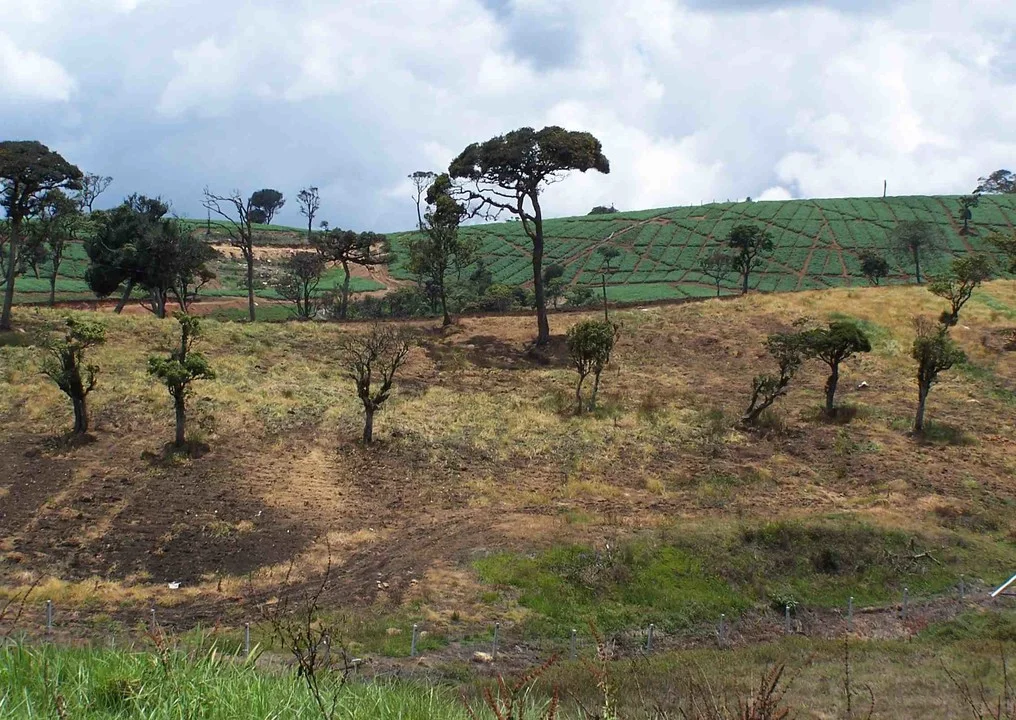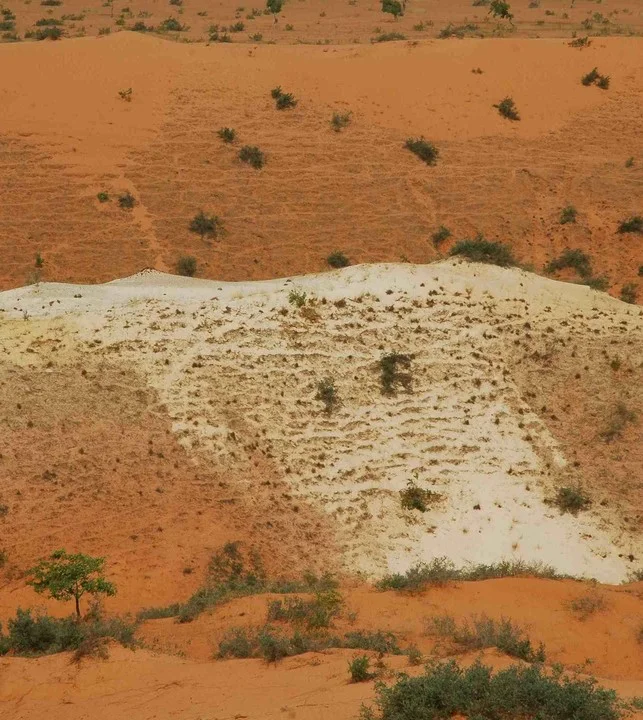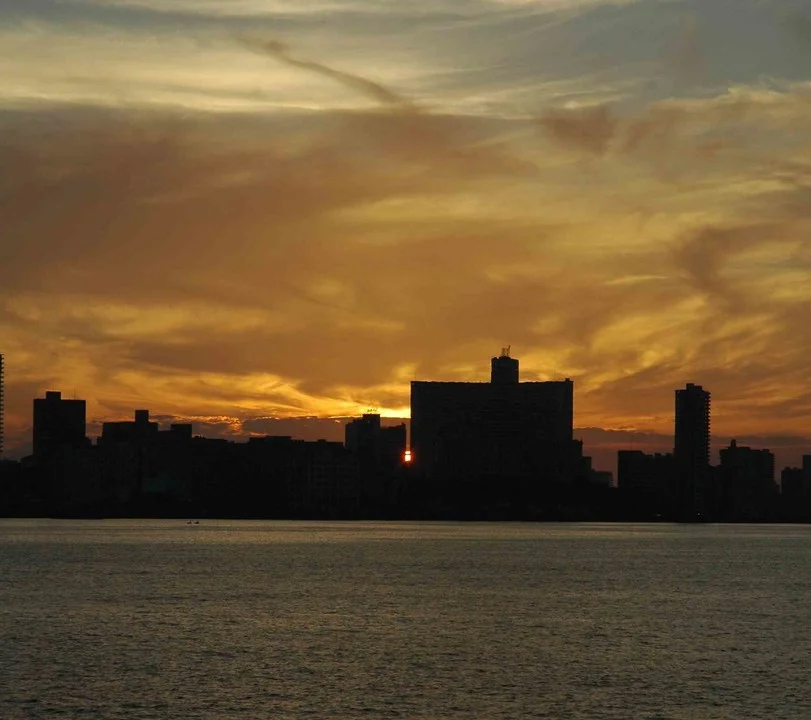Sri Lanka’s position paper on Climate Change given at the Conference for Climate Change (COP21) in December 2015 at Paris stated :
“We are aware that the optimum operating temperature of chlorophyll is at 37 deg C. In a warming world where temperatures will soar well above that, food production will be severely impacted. We would request the IPCC to address responses to this phenomenon”.
There have been numerous articles, pleas and even personal communications to those well-paid consultants and advisors to the powers that be that this statement is now being vindicated by the temperature profiles that we are seeing over the planet. The last public statement was in July 2016 which was then seen as the the warmest on record. We had the spectacle of bureaucrats travelling for conferences on the subject, but frustratingly, there was no attention being paid to this important aspect of climate change.
The global temperatures kept increasing and the best our ‘experts’ could do was attend a few more conferences. There seemed to be no interest at all in the scientific fact that, agriculture depends on the good growth of plants, all plants rely on their chlorophyll to grow and produce. Because Chlorophyll is an enzyme that functions at an optimum temperature of about 37-38 degrees centigrade, , its performance falls. In heat waves that exceed 39 degrees. From this point plant productivity will experience a yield drop until temperatures beyond 40 degrees will see the death of plant life.
Thankfully the bursts of extreme temperature are currently restricted to short episodic events, but the trend is that these events will become more commonplace in both frequency and duration. Why are heat waves so dangerous? It is because extreme temperatures experienced in heat waves often exceed the threshold for enzymatic activity. This phenomenon leads to heat stress and in long exposure periods results in death. The pattern is the same for plants or animals. This disturbing phenomena leaves little room for adaptation. In a warming world, long before thermal collapse, we would have succumbed to hunger.
All of agriculture depends on the good growth of plants, all plants rely on their chlorophyll to grow and produce. Chlorophyll is a molecule that functions to an optimum at about 37degrees, above that temperature, its performance falls. In heat waves often exceeding 38 degrees plant productivity will impact photosynthetic productivity and there will be a yield drop (fig).
What are the ways out? One would be to look for plants that have a wide heat stress tolerance; another will be to design future agroecosystems that can use the heat reducing mechanisms of ecosystems to respond to temperature raises.
As the local bureaucrats and advisors on Climate Change seemed to be resistant to change, it was a bit of relief when a ‘foreign consultant’ was hired to advise us on climate change. So with great expectations the following note was sent to Mr. Eric Solhiem, Advisor on Climate Change to the Government of Sri Lanka. It outlined four points.
(1) Consider the possibility of using PES (please see : www.restore.earth ) as a method of Climate Change adaptation and rural economic development.
(2) The urgent need for Sri Lanka to address the issues that we raised at COP21. They will have an enormous impact on this nation and needs urgent address. https://www.linkedin.com/pulse/who-listens-pays-attention-ranil-senanayake/
(3) The reality of sea level rise and the inability of the Sri Lankan bureaucracies to address it. https://www.linkedin.com/pulse/being-prepared-ranil-senanayake/
(4) The beggaring of the rural communities by planting trees at the cheapest price, ignoring the opportunity cost of obtaining PES values
Except for a response that read “Thanks again or raising these issues. I will see how these can be raised during our discussions and read your links in the mean time.” There has been no visible action on these issues date. Who can we turn to? It is now April 2023 the international scientific community have issued alarm after alarm on the vulnerability of the Asia sub-continent to massive heat spikes. Studies have constantly stated that ‘The Asian continent is warming faster than the global average. In the two recent sub-periods (1961–1990 and 1991–2020), the warming trend in Asia, which is the continent with the largest land mass extending to the polar region, have exceeded the global mean value’
One urgent national needed to deal with climate change is to begin mapping out high risk areas in the future and warm farmers in those areas of the steps they should take to adapt to the oncoming changes. Probability maps need to be constructed for temperature, rainfall intensity, wind intensity and salt-water intrusion. Could the bureaucrats in charge please do us at least that favor?
The current rush in high rise construction needs to be critically examined under such a scenario too. Recent studies in the US conform that air conditioning is a major contributor to Climate Change because of the use of hydrofluorocarbons (HFCs). HFC’s are 3830 more powerful than Carbon Dioxide as a Greenhouse Gas. The Fossil Carbon cost in generating the energy of such air conditioning has not yet been addressed. Nor has the contribution of Carbon Dioxide in making cement which is sixteen times more powerful, weight for weight, as petroleum is in producing Greenhouse Gasses.
The tragedy in Sri Lanka is that while grandiose statements are made and when even the President promised a fossil free path to development, the country is being carved out to be parceled out to ‘ industrial developers’ with no limits on the percentage of impervious surfaces that can be allowed and who are set to increase Sri Lanka’s Carbon Footprint exponentially with massive urban infrastructure based on concrete and air conditioning. This unreported and unchecked growth of Carbon Dioxide outpouring will increase our Carbon footprint and with each rise in our carbon footprint we ensure the inevitability of a heat stressed future that will place all of us on a hot seat to disaster!
OK, it is obvious by now that we cannot depend on the establishment to guide us through the dangerous maze that Climate Change is creating for us. Water availability is expected to lessen, the estimates for the future is that a one-degree increase in global temperature above the established norm, would eliminate fresh water from a third of the world’s land surface by 2100. The scientific data indicates that this increase has happened.
But Sri Lanka has been endowed a great blessing in this respect. It has a total area of 65,610 km², and on it over 30,000 manmade lakes collect and store rainwater in an area adding to about 870 km² in total. Today we destroy this amazing possibility, to utilize this gift of ‘future-proofing’ endowed on us by our ancestors, by mindless ‘development’ projects that cut across watersheds and spew pollutants into our waterways.
The mountains of Sri Lanka were once the forested ‘water towers’ that fed this system of reservoirs before they were removed for ‘industrial agriculture’. As one tree provides the cooling equivalent of eight room sized air conditioners or roughly 1,300,000 BTh u worth of cooling a day. Should we not think about redesigning our agricultural landscapes to adapt to the coming future? Should not the plant breeders hurry to find crop varieties that can withstand the rising heat?
Where is the leadership that can show us the way forward in a changing climate?







